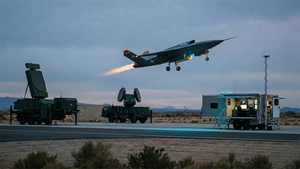
The global iron ore market is standing at a critical juncture in late 2025, grappling with a potent mix of persistent demand weakness from its largest consumer, China, and the imminent arrival of transformative high-grade supply, most notably from Guinea's Simandou project. This confluence of forces is not merely a cyclical downturn but a profound structural shift, poised to redefine pricing dynamics, trade flows, and long-term investment strategies across the entire steel value chain. As benchmark prices continue to exhibit significant volatility, the industry is bracing for a future where quality, sustainability, and strategic supply control will increasingly dictate market leadership.
The immediate implications are stark: a market contending with oversupply and a fundamental re-evaluation of its long-term trajectory. While short-term pressures on prices persist due to China's struggling property sector and plateauing steel output, the overarching narrative is dominated by the accelerating global push towards decarbonization. This environmental imperative is creating a discernible premium for higher-grade iron ore, essential for cleaner steelmaking technologies, even as overall demand growth moderates. The stage is set for a period of intense competition and strategic repositioning, where traditional market assumptions are being challenged by both economic realities and environmental mandates.
Simandou's Dawn and the Reshaping of Global Iron Ore Dynamics
The current turbulence in the iron ore market is deeply intertwined with a series of pivotal developments, chief among them being the much-anticipated commencement of shipments from the Simandou project. As of November 2025, the world's largest undeveloped high-grade iron ore deposit, with an average iron content exceeding 65%, is scheduled to deliver its first ore, or at least by the end of the year. This marks a monumental shift, as Simandou's full operational capacity, expected between 2028 and 2030, could introduce up to 120 million metric tons annually to the global seaborne market, equivalent to 5-6% of 2024's global production.
The project is divided into two main blocks, with Rio Tinto (ASX: RIO) (LSE: RIO) (SimFer JV) aiming to ramp up its production to 60 million tons per year within 30 months. The Winning Consortium Simandou (WCS), the other major stakeholder, has yet to disclose its precise ramp-up timeline. This influx of high-grade ore is projected to create a significant surplus, particularly challenging lower-grade, high-cost producers. Market forecasts suggest that Simandou's full ramp-up could depress overall iron ore prices, with some analysts predicting a potential fall to $85 per ton over the next three years. This timeline also aligns with a broader trend of investment in high-purity iron ore suitable for green steel initiatives, exemplified by Rio Tinto's Western Range joint venture with China Baowu Steel Group (private), which is 70% complete and set to deliver first ore in 2025, and Champion Iron's (ASX: CIA) (TSX: CIA) Direct Reduction Pellet Feed (DRPF) project commissioning in December 2025.
The strategic importance of Simandou extends beyond mere volume. For China, it represents a critical step in diversifying its iron ore supply and reducing its heavy reliance on Australia and Brazil. Chinese firms, including China Baowu Steel Group, hold significant stakes in the project, granting Beijing greater control over a major high-grade ore source and potentially increasing its influence over global commodity pricing. The state-run China Mineral Resources Group (CMRG) has already emerged as the world's largest iron ore buyer, consolidating purchases for most state-owned Chinese steelmakers, signaling a coordinated effort to leverage this new supply. Meanwhile, technological advancements in steel production, particularly the increasing adoption of Electric Arc Furnaces (EAFs) and hydrogen-based Direct Reduced Iron (DRI) processes, are driving demand for higher-grade iron ore with lower impurities, further cementing Simandou's strategic value.
Initial market reactions reflect caution and downward price pressure. The most-traded January iron ore contract on China's Dalian Commodity Exchange (DCE) recently hit multi-month lows, while the benchmark December iron ore contract on the Singapore Exchange (SGX) also saw significant declines. While temporary price supports have emerged from declining global shipments, burgeoning Chinese port inventories—reaching 138.44 million metric tons as of November 7, 2025—underscore that import volumes are currently outpacing consumption. This dynamic, coupled with China's struggling property sector and a pivot towards clearing existing housing inventory rather than new construction, paints a challenging picture for overall demand.
Navigating the Headwinds: Winners and Losers in a Changing Market
The structural shifts underway in the iron ore market will inevitably create a clear delineation between potential winners and losers. Companies with access to high-grade, low-cost production will be best positioned to thrive, while those heavily reliant on lower-grade, higher-cost operations face significant headwinds.
Among the likely beneficiaries are major diversified miners with significant high-grade assets, particularly Rio Tinto (ASX: RIO) (LSE: RIO), which is a key player in the Simandou project. Their involvement in Simandou, alongside other high-grade initiatives like the Western Range JV, positions them to capitalize on the growing premium for quality ore demanded by decarbonizing steelmakers. Similarly, Vale S.A. (NYSE: VALE), a Brazilian giant known for its high-grade Carajás iron ore, will likely maintain a competitive edge due to the superior quality of its product, which is well-suited for greener steel production processes. Companies like Champion Iron (ASX: CIA) (TSX: CIA), focusing specifically on Direct Reduction Pellet Feed, are also poised to benefit from the increasing demand for high-purity inputs.
Conversely, producers of lower-grade iron ore, especially those with higher operating costs, are likely to face significant margin compression. Smaller, independent miners in Australia and elsewhere, whose operational viability depends on robust benchmark prices, could struggle to compete against the massive influx of high-grade Simandou ore. Even major players like BHP Group (ASX: BHP) (NYSE: BHP) and Fortescue Metals Group (ASX: FMG), while boasting efficient operations, will need to adapt their portfolios to ensure a competitive offering of higher-grade products or face potential discounts for their traditional medium-grade ores. Steelmakers, particularly those in China and Europe, will also find themselves in a complex position. While the increased supply of high-grade ore offers cost and efficiency benefits for green steel production, the overall downward pressure on prices could impact their raw material procurement strategies and profitability if they are locked into long-term contracts at higher rates.
The strategic involvement of Chinese entities like China Baowu Steel Group (private) and China Mineral Resources Group (CMRG) in Simandou underscores China's ambition to secure its own high-quality supply and exert greater control over pricing. This could put non-Chinese steelmakers at a disadvantage in terms of raw material access and cost, creating a competitive imbalance. The evolving landscape demands that all participants in the iron ore and steel value chain meticulously re-evaluate their long-term strategies, prioritizing cost efficiency, product quality, and alignment with global decarbonization efforts to secure their market position.
Broader Implications: A New Era for Global Commodities and Geopolitics
The emergence of Simandou and the ongoing structural shifts in iron ore demand represent more than just market adjustments; they signal a new era for global commodities with far-reaching implications for industry trends, geopolitics, and regulatory landscapes. This event fits squarely into broader industry trends emphasizing supply chain resilience, resource nationalism, and the relentless drive towards decarbonization across heavy industries.
One of the most significant wider implications is the potential rebalancing of global iron ore power dynamics. For decades, Australia and Brazil have dominated seaborne iron ore supply. Simandou's full ramp-up, with its substantial high-grade output, directly challenges this duopoly, particularly for high-quality ore. This diversification of supply is a strategic victory for China, which has long sought to reduce its reliance on a few key suppliers. The consolidation of Chinese iron ore purchasing power through entities like CMRG further amplifies this shift, granting China greater leverage in price negotiations and potentially influencing global benchmark pricing. This strategic pivot could have ripple effects on existing trade relationships and encourage other nations to explore similar resource diversification strategies.
Regulatory and policy implications are also significant. The development of Simandou, a project of immense scale and complexity, required intricate agreements between the Guinean government, international mining giants, and Chinese consortia. This sets a precedent for large-scale resource development in emerging markets, highlighting the need for robust governance, environmental safeguards, and equitable benefit-sharing. Furthermore, as green steel initiatives gain momentum globally, governments may introduce policies, subsidies, or carbon taxes that further incentivize the use of high-grade iron ore and cleaner steelmaking technologies, creating a regulatory tailwind for projects like Simandou and potentially penalizing those producing lower-grade, higher-emission products.
Historically, major new supply sources have always disrupted commodity markets. The development of Australia's Pilbara region in the mid-20th century, for example, fundamentally altered the global iron ore landscape, shifting power away from traditional European and North American sources. Simandou's impact could be comparable, ushering in a period of heightened competition and potentially sustained lower prices as the market adjusts to the increased supply. This parallels the shale revolution in oil and gas, which dramatically reshaped energy markets and geopolitical dynamics. The difference, however, is that Simandou is not just about volume; it's about quality and its alignment with a global sustainability mandate, making its impact uniquely profound in the context of the 21st century.
The Road Ahead: Navigating Volatility and Embracing Green Transformation
Looking ahead, the iron ore market is poised for a period of continued volatility in the short term, but with a clear trajectory towards a fundamentally transformed long-term landscape. The immediate future will see the market grappling with the initial influx of Simandou ore, which, coupled with persistent softness in Chinese demand, is likely to keep prices under pressure. Investors should anticipate continued price fluctuations within the $90-$110 per ton range, with potential dips as new supply fully enters the market.
In the long term, the industry faces a dual challenge and opportunity: managing the structural decline in traditional Chinese steel demand while simultaneously embracing the burgeoning demand for green steel inputs. This will necessitate significant strategic pivots from mining companies. Investment will increasingly be directed towards high-grade projects that support decarbonization rather than pure volume expansion. We can expect to see further consolidation or strategic partnerships among miners to optimize resource allocation and gain access to premium deposits. Steelmakers, particularly in Europe and eventually other developed economies, will accelerate their transition to EAFs and DRI technologies, increasing the premium for pellet feed and high-purity iron ore. This could lead to a bifurcation of the market, with strong demand and higher prices for premium products, while lower-grade ores face declining relevance and pricing power.
Market opportunities will emerge for innovators in green steel technologies and for logistics providers capable of efficiently moving high-grade ore to new demand centers beyond China, particularly in Southeast Asia and India, although India's domestic supply largely meets its needs. Challenges will include navigating complex geopolitical landscapes, securing financing for large-scale infrastructure projects like Simandou's rail and port facilities, and managing environmental and social governance (ESG) expectations. Potential scenarios range from a rapid and orderly transition to a bifurcated market, where high-grade ore maintains strong pricing while lower grades become increasingly marginalized, to a more chaotic scenario where oversupply leads to a prolonged period of depressed prices across the board, forcing widespread mine closures. The most likely outcome is a gradual but inexorable shift towards a quality-driven market, punctuated by periods of price volatility.
Concluding Thoughts: A Market in Metamorphosis
The iron ore market is undeniably in a state of metamorphosis. The confluence of plateauing Chinese demand, the strategic imperative of decarbonization, and the game-changing arrival of Simandou's high-grade supply marks a definitive end to the commodity supercycle driven solely by China's insatiable appetite. The key takeaways are clear: the era of "any ore will do" is over; quality, sustainability, and strategic supply chain control are now paramount.
Moving forward, the market will be characterized by a growing premium for high-grade iron ore suitable for green steel production, and increased competition among producers. While overall demand growth may moderate, the demand for specific, high-quality inputs will intensify. This structural shift will reshape investment patterns, favoring projects that align with the global decarbonization agenda. The strategic implications for China, in particular, are profound, as Simandou significantly enhances its supply security and leverage in the global iron ore trade.
Investors in the coming months should closely monitor the ramp-up schedules and actual output from Simandou and other high-grade projects, as well as the pace of adoption of green steel technologies globally. Key indicators will include the price differential between high-grade and low-grade iron ore, inventory levels at Chinese ports, and any new policy announcements related to decarbonization in major steel-producing regions. The future of iron ore is not just about tonnage; it's about transformation, and only those companies and nations that adapt to this new reality will secure their place in the evolving global economy.
This content is intended for informational purposes only and is not financial advice





